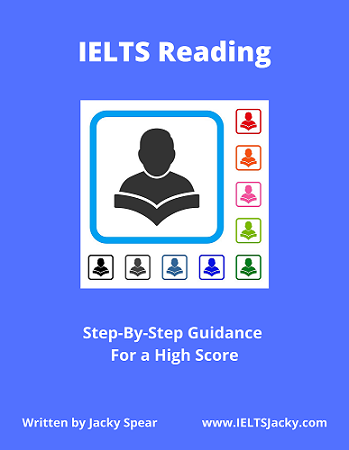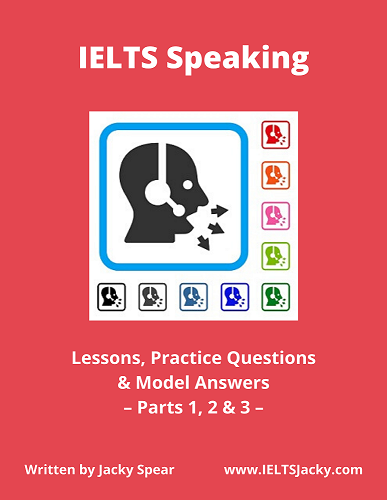IELTS
Academic Writing Task 1
–
How To Understand & Analyse Task 1 Questions –
There are 5 steps to writing a good essay for IELTS Academic Writing Task 1:
- Analyse the question
- Identify the main features
- Write an introduction
- Write an overview
- Write the details paragraphs
One of the biggest mistakes many students make is missing out the first step – analysing the question.
They are so worried about getting their essay finished in the 20 minutes allowed for the task that they get straight down to writing without fully understanding the question. The result is an essay that fails to meet many of the marking criteria and thus achieves a low score.
Whilst your language skills may be good enough to earn you a Band 7 or 8, not answering the question appropriately could reduce your score to a Band 6 or even lower.
It’s not difficult to analyse and understand task 1 questions once you know how and that’s what you’re going to learn in this lesson.
Understanding the
Question
The first thing to understand is that the format of every question in IELTS Academic Writing Task 1 is the same.
Here’s a typical question. The highlighted words are always the same no matter what type of question you get.
The bar chart below shows numbers of seals, whales and dolphins recorded in the Gormez Straits from 2006 to 2018.
Summarise the information by selecting and reporting the main features, and make comparisons where relevant.
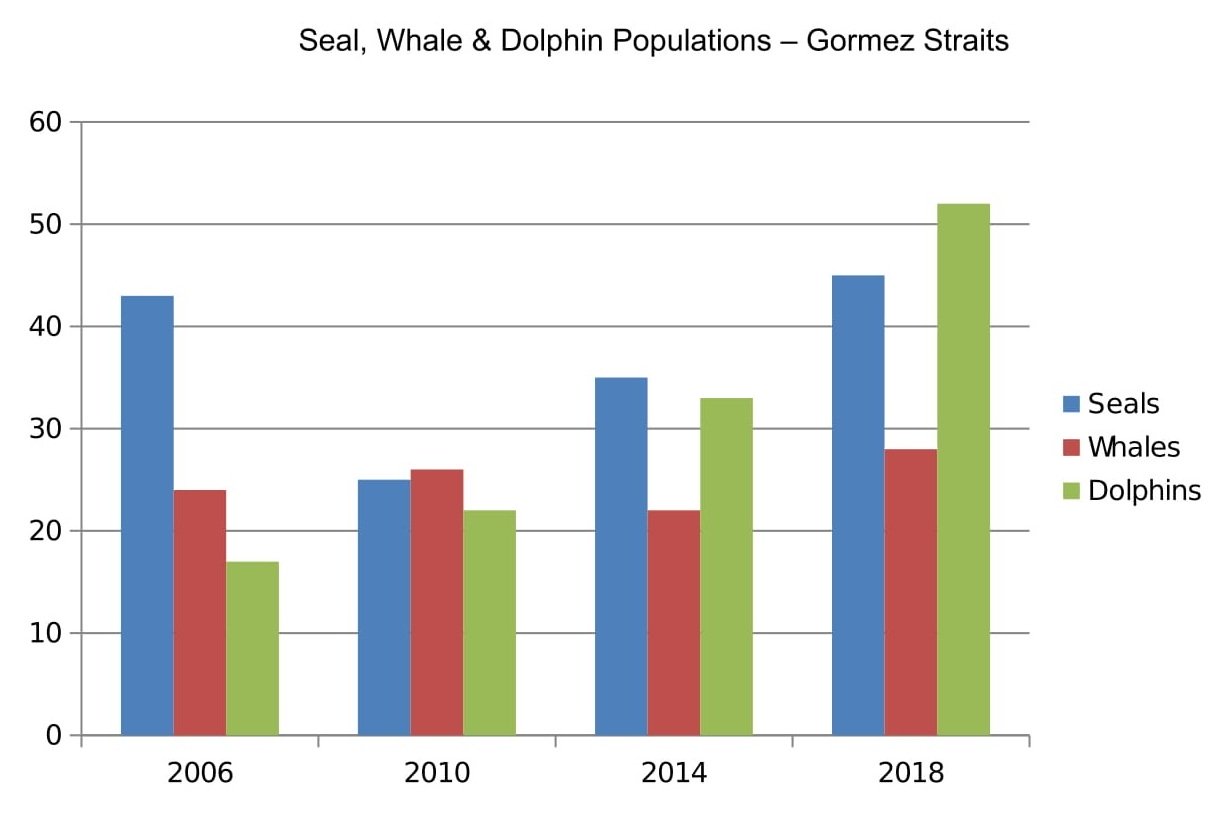
Every question consists of:
- A brief description of the graphic
- The instruction
- The graphic – chart, graph, table, etc.
So, let’s analyse what you have to do. For this, we need to look at the ‘instruction’ sentence.
Summarise the information by selecting and reporting the main features, and make comparisons where relevant.
You have to do 3 things:
1. Select the main features.
2. Write about the main features.
3. Compare the main features.
This is the same for every question and every type of graphic.
You’ll notice that each part of the task refers to the ‘main features’ of the graphic. You do not have to write about everything.
A key skill you must learn is how to quickly pick out the features.
Another point to note is that you are not required to give your opinion as you would for many Task 2 essays. This is a common mistake which will lose you marks. Only write about what you can see in the graphic.
Identifying the Main
Features
I’m now going to give you some checklists to help you to identify the main features of the different types of IELTS Academic Writing Task 1 questions.
I go into detail on
how to pick out the main features in specific questions in the lessons on
individual question types.
Here are the 7 question types:
Click
the links for step-by-step instructions on how to write each type of essay
including a model answer.
The various types of graphs and charts are not especially difficult to interpret. The challenge for most students is simply that they are not used to working with them.
Remember, IELTS is an English exam designed to test your language skills, not your mathematics ability. No complicated calculations are required.
The graphics are just a way of presenting information using numbers and diagrams. Your job is to convert the information into a written form. That’s all you have to do.
Bar Charts & Line Graphs
1) What can you learn from the title?
There won’t always be a title but where there is, read it carefully as it will give you important information about the chart or graph and the first clue as to what it's about.
In our example above, the bar chart shows ‘Seal, Whale & Dolphin Populations in the Gormez Straits’.
2) What information do the 2 axes give?
The chart or graph will have a vertical axis and a horizontal axis, often called the ‘x’ and ‘y’ axes.
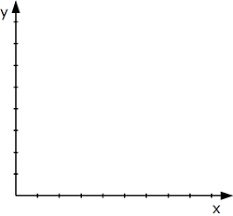
Each gives a different type of information. In our example, the x axis tells us the years in which the numbers of seals, whales and dolphins were recorded, and the y axis shows how many were recorded.
3) What are the units of measurements?
These could be many different things, for example, amount, time, age, %. The measurements on our example bar chart are the amount in single numbers and time in years.
Occasionally, the units won’t be given but you will be able to work out what they are either from the title of the chart or other information it includes.
4) What is being compared?
Usually, IELTS Academic Writing Task 1 questions ask you to compare two or more groups of things. They could include almost anything. In our sample question, we are asked to compare three types of marine mammals.
Very often, you will have to compare what happens over a period of time.
5) What are the time periods?
Is the data from the past, the present or the future? Often it will be two or all three of these. This is very important to note because it will determine what tense or tenses you should use.
The data in our sample bar chart is all in the past.
6) What is the most obvious trend?
You should look for any clear increases or decreases in the data. They could be gradual or sharp changes.
7) Are there any notable similarities?
As well as noting marked increases and decreases, you also need to look out for things that are similar or stay the same over a period of time.
You can download a PDF of all the checklists, without the explanations, on this page: Task 1 Checklists.
Use them as you practice writing IELTS Academic Writing Task 1 essays.
Tables
Many students fear tables more than any other type of graphic because they’re just sets of numerical data without any visual representation. However, they are not as complicated as they may at first look.
The key to understanding them is to use the clues given in the title, the row and column headings and the units of measurement.
For example, the title of the table below tells us that it shows changes in world population from 1950 to projected levels in 2050.
Rows and columns – The world is divided into continents (Africa, Asia, etc.) and data is given for three specific years: 1950, 2000 and projected data for 2050.
In the first table, the units of measurement is billions of people and in the second table, percentages of the total world population are used.
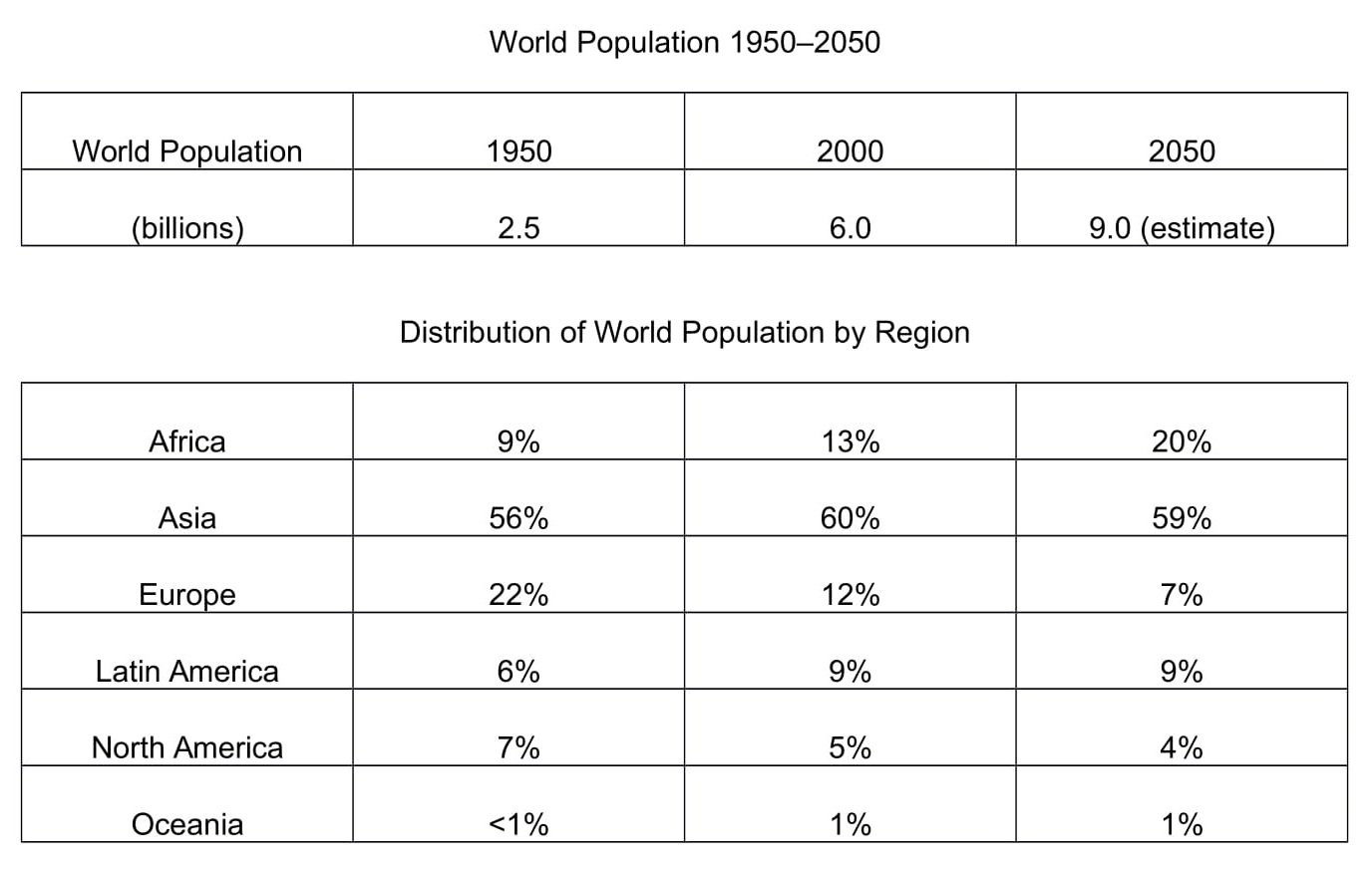
All the same questions in the checklist for bar charts and line graphs are relevant to tables except for question 2 about the x and y axes. Apart from this, analyse the data in the same way.
Click this link for step-by-step instructions on how to answer this question including a model answer:
Table Chart – Instructions & Model Answer
Pie Charts
Pies charts feature regularly in IELTS Academic Writing Task 1. They always show percentages or proportions. Apart from that, they are essentially the same as bar charts and line graphs in that they are another way of presenting data visually.
As with tables, the same checklist of questions can be used to analyse them, with the exception of question 2 about the x and y axes.
Pie charts generally have titles and labels or sometimes a key instead of segment labels as in the sample question below. The key explains what each segment of the pie chart represents.
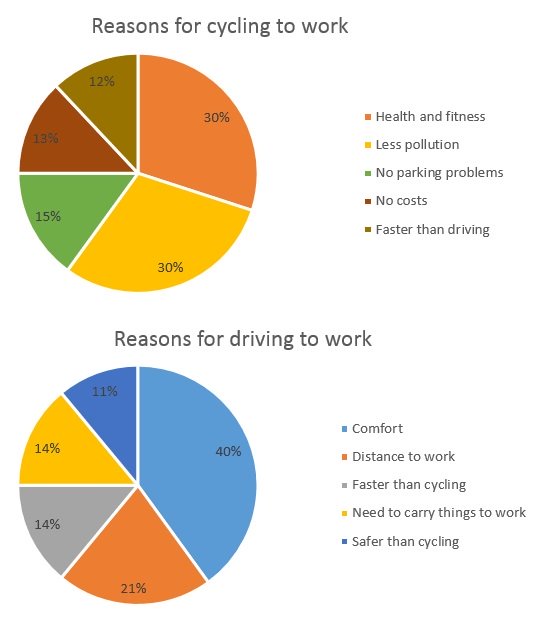
Source: Official website IELTS Essentials
Click this link for step-by-step instructions on how to answer this question including a model answer:
Pie Chart – Instructions & Model Answer
Process Diagrams
Now we move on to a very different type of graphic – the process diagram.
Here’s a checklist of questions you can ask to help you analyse and understand them.
1) Is it a linear or a cyclical process?
A linear process starts and finishes at different places. It will often involve the manufacture or creation of something, with raw materials going in at one end and the finished product coming out the other end.
A cyclical process is a process that goes back to the beginning and repeats over and over again, such as the life cycle of a frog.
Lineal process
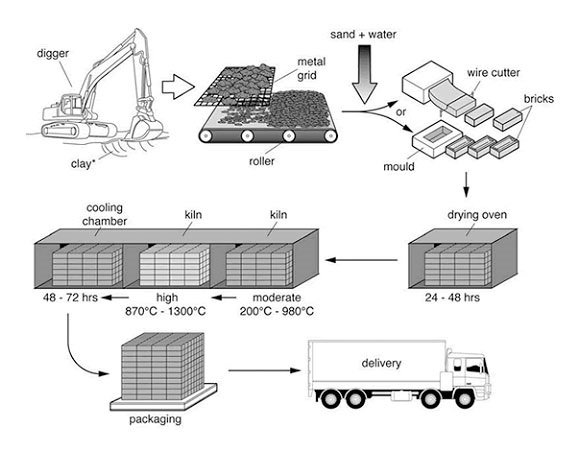
Source: IELTS past paper
Cyclical process
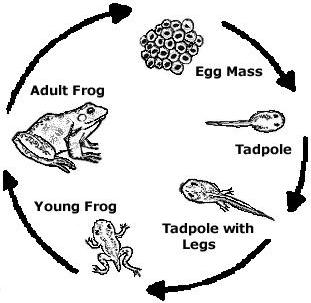
2) Where does the process start and end?
For a lineal process, this will usually be obvious. It may be harder to determine for a cyclical process so it’s important that you examine the graphic carefully to find out.
3) How many steps are there to the process?
If there are a lot, it can be helpful to number them from 1 to whatever number the final stage is.
4) Can the process be easily broken down into stages?
In the brick-making graphic, for example, there are three stages:
a) Creating the bricks from clay
b) Manufacturing the finished product by drying and firing
c) Packaging and delivery
In the life cycle graphic, there are also three distinct stages where the frog is at different stages of development – egg, juvenile, adult.
5) What are the raw materials? What is produced at the end of the process?
These questions obviously apply only to manufacturing processes.
For other types of process, it might be more appropriate to ask the following question.
6) What is the end result of the process?
The graphic below shows a different type of process, more of a system, and this question would certainly be helpful to ask here. The end result is the production of electricity.
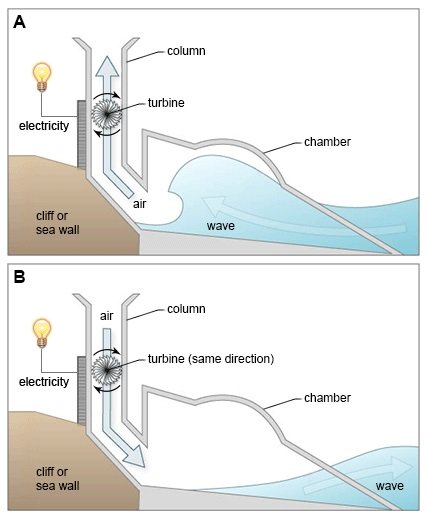
Source: Official website IELTS Essentials
Click this link for step-by-step instructions on how to answer this question including a model answer:
Process Diagram – Instructions & Model Answer
Maps
For IELTS
Academic Writing Task 1 questions about maps, you will normally be asked to
compare two or three maps of a place over a period of time as in this question.
The maps could be from the past or the present. Occasionally you’ll get a map of a proposed development in the future.
Map questions are some of the easiest to answer because the information is very clear, it doesn’t involve numbers and it needs little interpretation. However, I have a short checklist of questions you can ask to help you analyse and understand them.
1) What time periods are shown?
Is the data shown from the past, the present or the future? This is important to note because it will determine whether you should write in the past, present or future tense.
The two maps below show the village of Stokeford at two different times in the past.
2) What are the main differences between the maps?
What features have disappeared? What new features are in their place?
3) What features have remained the same over the time period?
Although the location on the maps will have undergone major development, some features will probably remain unchanged.
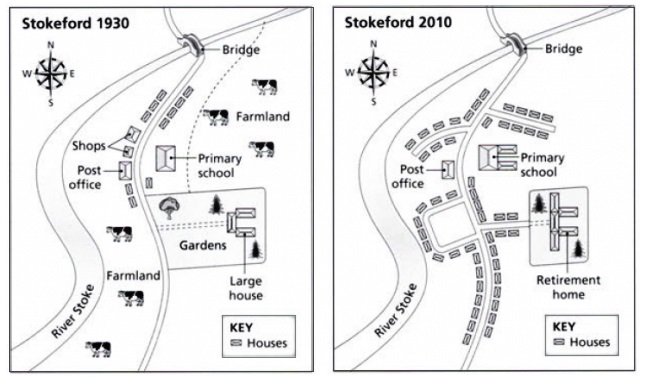
Source: IELTS past paper
Click this link for step-by-step instructions on how to answer this question including a model answer:
Maps Essay – Instructions & Model Answer
Here’s the link to the checklists again: Task 1 Checklists
The next step to writing a high-scoring essay for IELTS Academic Writing Task 1 is to learn how to plan your essay using an easy to remember 4 part structure. You’ll find the lesson here: How To Plan a Task 1 Essay
Want to watch and listen to this lesson on IELTS Academic Writing Task 1?
Click on this video.
Like this page?
IELTS Academic Writing Task 1 – All Lessons
IELTS Academic Writing – A summary of the test including important facts, test format & assessment.
Academic Writing Task 1 – The format, the 7 question types & sample questions, assessment & marking criteria. All the key information you need to know.
Understanding Task 1 Questions – How to quickly and easily analyse and understand IELTS Writing Task 2 questions.
How To Plan a Task 1 Essay – Discover 3 reasons why you must plan, the 4 simple steps of essay planning and learn a simple 4 part essay structure.
Vocabulary for Task 1 Essays – Learn key vocabulary for a high-scoring essay. Word lists & a downloadable PDF.
Grammar for Task 1 Essays – Essential grammar for Task 1 Academic essays including, verb tenses, key sentence structures, articles & prepositions.
The 7 Question Types:
Click the links below for a step-by-step lesson on each type of Task 1 question.




